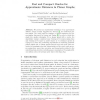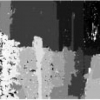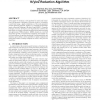296 search results - page 7 / 60 » Approximate Discovery of Random Graphs |
ESA
2007
Springer
14 years 1 months ago
2007
Springer
We present an experimental evaluation of an approximate distance oracle recently suggested by Thorup [1] for undirected planar graphs. The oracle uses the existence of graph separa...
ICDM
2006
IEEE
14 years 1 months ago
2006
IEEE
How closely related are two nodes in a graph? How to compute this score quickly, on huge, disk-resident, real graphs? Random walk with restart (RWR) provides a good relevance scor...
CVPR
1998
IEEE
14 years 9 months ago
1998
IEEE
Markov Random Fields (MRF's) can be used for a wide variety of vision problems. In this paper we focus on MRF's with two-valued clique potentials, which form a generaliz...
DATE
2007
IEEE
14 years 2 months ago
2007
IEEE
In this paper we introduce a new algorithm for model order reduction in the presence of parameter or process variation. Our analysis is performed using a graph interpretation of t...
SIGECOM
2006
ACM
14 years 1 months ago
2006
ACM
Braess’s Paradox is the counterintuitive but well-known fact that removing edges from a network with “selfish routing” can decrease the latency incurred by traffic in an eq...



